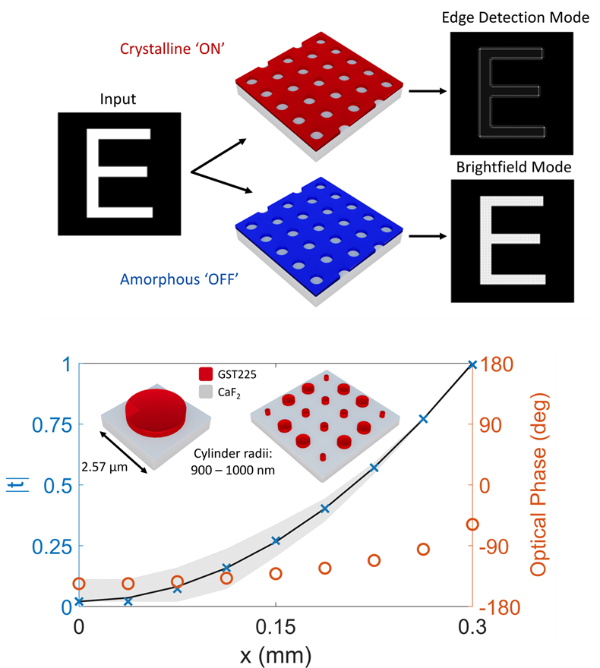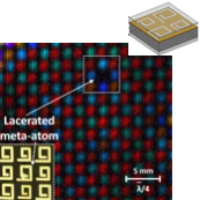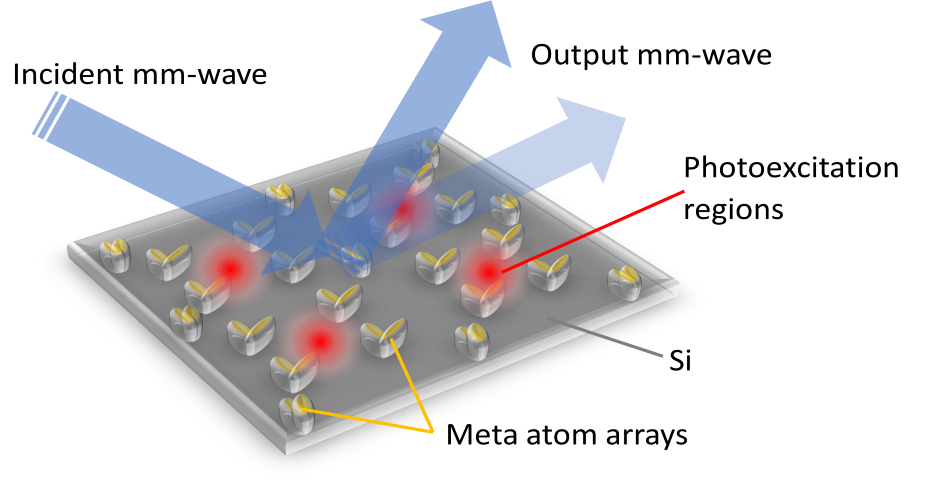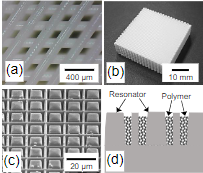A-Meta
A-Meta
A UK-US Collaboration for Active Metamaterials
The University of Exeter has received a £1.8 million research grant for a collaboration with University of North Carolina at Charlotte, Clarkson University, and the City University of New York in the USA to develop advanced, reconfigurable metamaterials that will revolutionise technologies such as wireless communication networks, remote imaging and artificial intelligence type computing.
The project will be led by experts from Exeter’s Centre for Metamaterial Research and Innovation (CMRI). It is one of 12 projects nationwide funded by a total £17 million investment from the EPSRC in their International Centre to Centre Research Collaboration programme.
The project, called “A-Meta”, aims to develop a new family of metamaterials, a term used to describe artificially structured materials with properties that go beyond those found in nature.
The functionality of traditional metamaterials is however fixed at the time of fabrication in, making it hard to adapt them to the multifunctionality and reconfigurability essential to many of today’s applications.
A-Meta breaks from tradition by developing tunable, reconfigurable and programmable metamaterials, and will include input from a wide range of prestigious international partners, including:
- Airbus
- BAE Systems
- Ball Aerospace (USA)
- Bodkin Design
- British Telecommunications
- DSTL
- META
- M Ventures
- NASA
- Oxford Instruments
- Phoebus Optoelectronics
- QinetiQ
- Thales
- Transense
- WaveOptics
UK
Prof Alastair Hibbins – Principle Investigator
Prof C. David Wright – Co-investigator (RC1 lead)
Prof Euan Hendry – Co-investigator (RC2 lead)
Prof Geoff Nash – Co-investigator (RC3 lead)
Prof Jacopo Bertolotti – Co-investigator (RC1)
Prof Oana Ghita – Co-Investigator (RC3)
Dr Ian Hooper – Research-Co-Investigator (RC2)
Dr Cameron Gallagher – Researcher (RC2)
Joe Shields – Researcher (RC1)
Dr Caroline Pouya – Researcher (RC3)
Stuart Kendall – PhD Researcher (RC1)
USA
Prof Andrea Alu (RC 1 & 2)
Dr David Crouse (RC 1 & 2)
Dr Cetin Cetinkaya (RC3)
Dr Glenn Boreman (RC1)
Dr Tino Hofmann (RC 2)
Dr Mario J Mencagli (RC 1 & 2)
The objective here is to combine all-dielectric and plasmonic metasurface concepts with chalcogenide phase-changematerials to provide fast, dynamic, and tunable control of the amplitude and phase of light. Such active control leads to a wide range of important technical applications, such as dynamic beam steering, holographic displays, reconfigurable and dynamic lensing, optical modulation and the focus of this work- optical analogue computing and multi/hyper-spectral sensing.
Analog optical computing has seen an increase in attention in recent years due to potential advantages it holds over its digital counterpart, including intrinsic parallelism, low-loss transmission and ultra-high bandwidth. Fast and energy efficient optical computing systems have been demonstrated, for example implementing neural networks and matrix-vector multiplication. In A-Meta we are developing metamaterial-based optical computing systems for a range of computational tasks, including image processing, matrix-vector multiplication, optical mode conversion and more. Specifically - along with A-Meta collaborators at the City University of New York, the University of North Carolina at Charlotte and the University of Oxford - we have developed novel convolutional optical computing approaches using active phase-change metasurfaces that enable emerging applications in artificial intelligence-assisted imaging and vision devices with switchable multitasking.

The lead for this Research Challenge is Prof C. David Wright.
Here we will address the lack of practical microwave and terahertz modulators by exploiting the change in conductivity of a semiconductor upon illumination with an optical light source by a novel approach to reduce charge carrier recombination. Fast, high-resolution, and efficient GHz-THz spatial light modulators will be transformative to a new generation of reconfigurable complex systems for imaging, communications, beam steering and more.
Having aligned the optical excitation array with a periodic metasurface, we are able to controllably excite small regions around each meta-atom, and probe its function to the metasurface response. The image shows the photoactive regions around individual meta-atoms in a dual frequency band metasurface: we see individual switching of meta-atoms in both the low (red) and high (green) frequency bands of the surface, as well as defective meta-atoms.

The lead for this Research Challenge is Prof Euan Hendry.
We will develop a new generation of dynamically tunable elastic-wave metamaterials from the micro- to the macroscopic to address (i) the creation of phononic test artefacts enabling in-situ monitoring of additive manufacturing (AM) processes, and (ii) the incorporation of advanced materials, using AM, to create tunable phononic materials and devices for applications such as signal processing.
The lead for this Research Challenge is Prof Geoff Nash.
Check out the latest news on the Centre for Metamaterial Research and Innovation (CMRI) blog.


